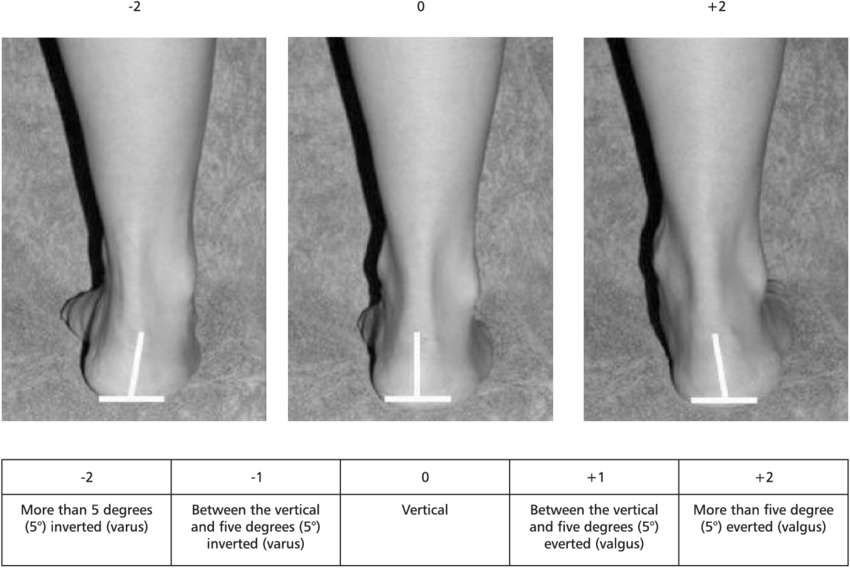Photo by: Tommy Lyles
Why Do I Need A Gait Analysis?
If you’re a runner, whether you’re a world class athlete who want to go for the Gold in the Olympics or a Weekend Warrior who wants to train a 5k or 10k to get back in shape or keep up with the kids, you want to perform at your best and injury free.
A gait analysis is a great method for identifying biomechanical abnormalities in the gait cycle.
It’s a tool used to assess the way in which you walk and run. It can be beneficial in that it can identify any overactive or underactive muscles in the feet, which could lead to potential injuries and inefficiencies that you’re currently experiencing or may encounter in the future.
The Foot Posture Index FPI-6
The Foot Posture Index (FPI) devised by Dr. Anthony Redmond in 2004 uses six quality measurements to assign subjects a score where 0 is neutral and positive numbers signal degree of pronation, negative numbers degree of supination. It iss a novel method of rating foot posture using set criteria and a simple scale.
It is a clinical tool used to quantify the degree to which a foot is pronated, neutral or supinated.
It is a measure of standing foot posture and so is not a replacement for gait assessment where time and facilities exist.
It is however a more valid approach than many of the static weightbearing and non-weightbearing goniometric measures currently used in clinic.
FPI-6 Instructions for Use
The runner should stand in their relaxed stance position with double limb support.
The runner should be instructed to stand still, with their arms by the side and looking straight ahead.
It may be helpful to ask the runner to take several steps, marching on the spot, prior to settling into a comfortable stance position.
During the assessment, it is important to ensure that the runner does not swivel to try to see what is happening for themselves, as this will significantly affect the foot posture.
The runner will need to stand still for approximately two minutes in total in order for the assessment to be conducted.
The assessor needs to be able to move around the runner during the assessment and to have uninterrupted access to the posterior aspect of the leg and foot.
If an observation cannot be made (e.g. because of soft tissue swelling) simply miss it out and indicate on the datasheet that the item was not scored.
If there is genuine doubt about how high or low to score an item always use the more conservative score.
How To Score PFI-6
Features commensurate with an approximately neutral foot posture are graded as zero, while pronated postures are given a positive value, and supinated features as negative value. when the scores are combined, the aggregate value gives an estimate of the overall foot posture.
High positive aggregate values indicate a pronated posture, significantly negative aggregate values indicate a supinated overall foot posture, while for a neutral foot the final FPI aggregate score should lie somewhere around zero.
Selecting a Running Shoe
Foot Posture Index Not Enough??
Research shows the importance of considering the mechanics of the hips and trunk of the body and how they can play a vital role in controlling movement seen distally in the lower limbs (Chuter et al “Proximal & distal contributions to lower extremity injury: a review of the literature. 2012).
In contrast to the lack of evidence supporting a cause-effect relationship between distal contributions to lower extremity injury, an increasing amount of studies are managing to link movements in the proximal lumbo-pelvic hip complex with overuse injuries in the lower extremity, e.g. foot and ankle injuries, patellofemoral pain syndrome, iliotibial band syndrome, anterior cruciate ligament injury.
In Part 2, we will look at how to evaluate Upper Body Posture, how it can affect foot posture, and what type of corrective exercises can one do to improve their running gait and perform at their best and injury free!
Photo by Andrew Tanglao
Until next time - ENVISION, BELIEVE, EXECUTE and SUCCEED
To your health!
DMP Fitness
Your Goals + Our Design = Get You Fit
Darryl Perrilloux
Owner/Master Trainer
Mobile: 832-736-3664
Email: Darryl@dmpfitness.org
Web: www.dmpfitness.org
Sources:
https://www.forbes.com/sites/leebelltech/2018/09/30/running-tech-what-is-a-gait-analysis-and-why-should-every-runner-have-one/#1cd5e73f79bf
https://www.physio-pedia.com/Foot_Posture_Index_(FP1-6)
https://www.researchgate.net/publication/215544591_Intrarater_reliability_of_the_Foot_Posture_Index_FPI-6_applied_as_a_tool_in_foot_assessment_in_children_and_adolescents
https://www.runnersneed.com/expert-advice/gear-guides/gait-analysis.html
https://runnersconnect.net/running-gait-analysis-footwear/









